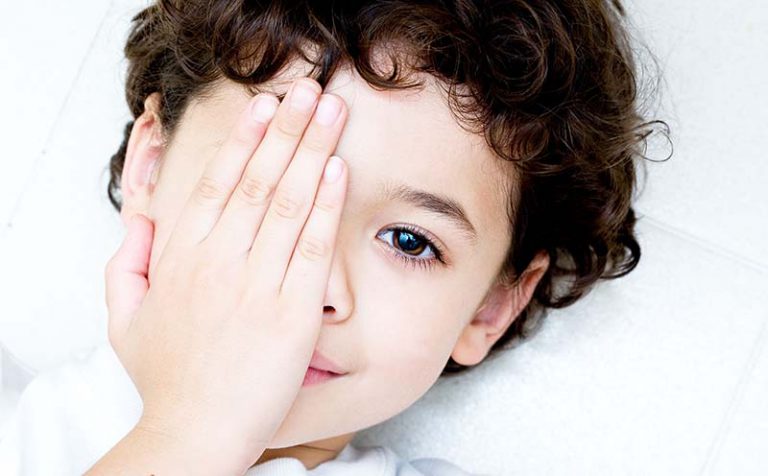
The rate of myopia (short-sightedness) of Hong Kong children is incredibly high. Research shown that about 2 out of 10 Hong Kong children aged 6 had myopia. The situation was more serious in the age group of 12, about 6 out of 10 had myopia.1 It has been found that high myopia (-6.00D or above) was associated with various eye diseases, such as glaucoma, cataract and retinal detachment. Therefore, it is important to control myopia from progressing rapidly in children, orthokeratology (orthko-k) is one of the ways that are with scientific support for slowing down the myopic progression.

Advantages of ortho-k lens wearing:
Scientific research has proven ortho-k can slow down the myopic progression in children by about 50% per year when compared to children just wearing single vision lenses. 2-8
- Ortho-k can usually reduce myopia of -4.00D within the first two weeks. Vision of successful wearers can usually be maintained throughout the day after lens removal.
- Night time wearing modality can bring convenience to those who dislike wearing glasses or contact lenses during the day, or participate actively in sports.
- Problems, such as dry eye, arising from normal day time contact lens wear can be avoided.
- It is a reversible procedure, ocular parameters generally return to their original status within few weeks.
Disadvantages of ortho-k lens wearing:
- Wearers should strictly follow the instructions given by the optometrist, non-compliance could result in corneal infection and possible vision loss. These complications can be kept to a minimum if proper instructions and lens usage are followed.
- Parents and wearers have to spend more time initially for ortho-k lens fitting and follow-ups. In the absence of adverse events, regular aftercare visits (3-6 monthly) are still essential to ensure the health of the eyes.
- Ortho-k cannot cure myopia. The myopia reduction effect will wear off gradually after stopping of lens wear.
By Paco Chan, Registered (Part I) Optometrist
Eyecare information by Swisscoat Vision Centre
Address : G/F Yuen Yick Building, 27-29 Wellington Street, Central, Hong Kong
Appointment :+852 3579 4763
Website : www.swisscoat.com
References:
- Lam CS, Lam CH, Cheng SC, Chan LY. Prevalence of myopia among Hong Kong Chinese schoolchildren: changes over two decades. Ophthalmic & physiological optics : the journal of the British College of Ophthalmic Opticians (Optometrists) 2012; 32(1): 17-24.
- Charm J, Cho P. High myopia-partial reduction ortho-k: a 2-year randomized study. Optometry and vision science : official publication of the American Academy of Optometry 2013; 90(6): 530-9.
- Cho P, Cheung SW, Edwards M. The longitudinal orthokeratology research in children (LORIC) in Hong Kong: a pilot study on refractive changes and myopic control. Current eye research 2005; 30(1): 71-80.
- Santodomingo-Rubido J, Villa-Collar C, Gilmartin B, Gutierrez-Ortega R. Myopia control with orthokeratology contact lenses in Spain: refractive and biometric changes. Investigative ophthalmology & visual science 2012; 53(8): 5060-5.
- Chen C, Cheung SW, Cho P. Myopia control using toric orthokeratology (TO-SEE study). Investigative ophthalmology & visual science 2013; 54(10): 6510-7.
- Cho P, Cheung SW. Retardation of myopia in orthokeratology (ROMIO) study: a 2-year randomized clinical trial. Investigative ophthalmology & visual science 2012; 53(11): 7077-85.
- Hiraoka T, Kakita T, Okamoto F, Takahashi H, Oshika T. Long-term effect of overnight orthokeratology on axial length elongation in childhood myopia: a 5-year follow-up study. Investigative ophthalmology & visual science 2012; 53(7): 3913-9.
- Walline JJ, Jones LA, Sinnott LT. Corneal reshaping and myopia progression. The British journal of ophthalmology 2009; 93(9): 1181-5.
